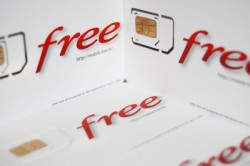Free Mobile has announced that it will be opening up four million Free WiFi access points to mobile users.
Freebox subscribers on the €15.99 per month tariff, as well as Free mobile subscribers on the €20 per month tariff, will now be able to access all other Freeboxes using their Free mobile phones. The operator is calling the service FreeWiFi Secure.
The carrier will enable phones that can support EAP-SIM authentication to connect automatically to WiFi access points sold to Free's fixed broadband customers. WiFi data consumption will not count against users' mobile data limits.
Although Free said its four million strong access point network would benefit "indoor data coverage, particularly in dense zones", a drawback in terms of user experience of WiFi sharing is that most residential Freebox subscribers will live in… residential areas. Mobile users require good mobile data coverage when they are mobile – city centres, transport hubs, shopping zones etc – not always where most residential access points are deployed.
BT in the UK, and Belgacom in Belgium, already run similar WiFi sharing schemes using FON technology. That operates by giving FON-enabled access points a dual SSID, one for "private" use, and one for FON users. Free has not yet shared if it is using a similar method of "dividing" Freebox bandwidth.
BT has a similar number of access points deployed to Free in France (in fact about a million more), but has been coy about sharing usage numbers. One aspect where Free may have an advantage over fixed providers using FON is that by using EAP-SIM it can automatically connect users to its WiFi access points. BT, without that mobile property, relies on users finding and logging in to FON networks.
This is an interesting ploy from Free, but not one that will lift it out of the network problems it currently faces – its in-building coverage is poor, its urban capacity is very limited. One thing this isn't is "carrier-grade WiFi" as the industry currently understands the term – that is: an optimised use of WiFi in association with connection management tools, policy and QoS to benefit the user experience. It's a stitching together of residential access points to make them accessible to mobile users. Location of sites is entirely determined by Free's user base. Quality of service will be essentially unmanaged. Backhaul will also rely on the available connection to the Freebox.
It's good marketing, though, and shows that Free is thinking about how to combine its fixed and mobile assets. Its release mentions use of mobile VoIP and other IP services over WiFi. When it receives its 800MHz 4G spectrum, it should be able to provide a much more co-ordinated customer offer and it will be interesting to see if it intends to extend that service flexibility over LTE. A co-ordinated WiFi-mobile customer experience will also stand it in good stead as a value-add for capture of the domestic fixed broadband market.



